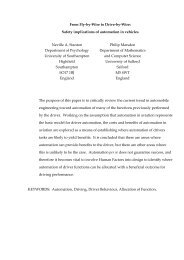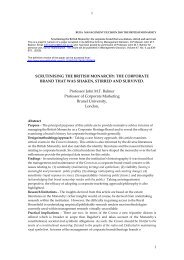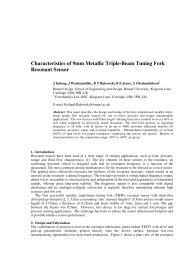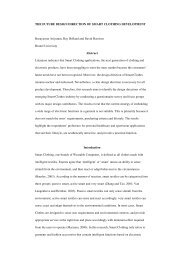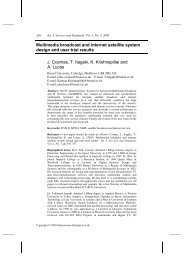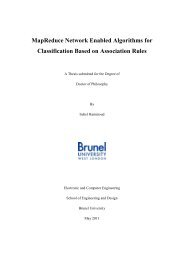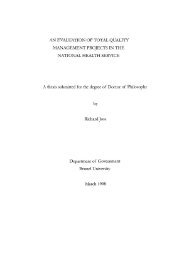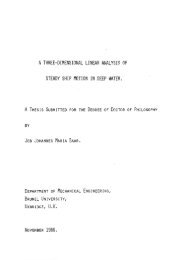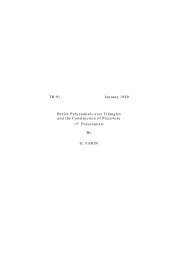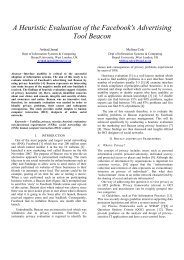Chapter 1 - Brunel University
Chapter 1 - Brunel University
Chapter 1 - Brunel University
Create successful ePaper yourself
Turn your PDF publications into a flip-book with our unique Google optimized e-Paper software.
<strong>Chapter</strong> 2: Literature Review<br />
Shehry et al., 2006; Weerakkody et al., 2006). This government transition phase<br />
moved on to a more integrated web presence and e-democracy (Moon, 2002; Layne<br />
and Lee, 2001). Many researchers have tried to understand the e-government<br />
phenomenon from an evolutionary point of view by dividing the e -government<br />
development process into many stages (e.g. Moon, 2002;Deloitte and Touche, 2001 ;<br />
Layne and Lee, 2001). These and several other researchers exemplify that to develop<br />
and implement a vigorous e-government infrastructure requires a staged approach,<br />
where the development focus moves from the ‗immature‘ to the ‗mature‘ – these<br />
terms are often used to characterise the state of a given level in a continuous process<br />
(Irani et al., 2006; Anderson and Henriksen, 2006; Ebrahim and Irani, 2005). The<br />
latter offers full integration with public administration and will have required the<br />
underlying re-think and change of government and its constituents (Irani et al.,<br />
2006).<br />
Traunmuller and Lenk, (2002) accentuate that the concept of e-government<br />
represents a fertile anthology of organisational and technological issues.<br />
Incorporating the conception of maturity or immaturity does not reinforce the<br />
ontology of the e-government concept. In addition, Andersen and Henriksen, (2006)<br />
highlight that certain qualitative and/or quantitative measures to ascertain what<br />
distinguishes different degrees of maturity are indispensable. Irani et al., (2006)<br />
state that a benefit of having a staged approach is the ability to generate momentum<br />
that can then be maintained. The reason is that it may allow the public sector<br />
(including local government organisations) to attract an increasing number of<br />
citizens to using electronic services. The e-government implementation process<br />
passes through different stages until it reaches its highest potential stage, i.e. the<br />
integration of government information and services in different departments, for<br />
different functions and at different levels of the government system, thus enabling<br />
citizens to obtain government services and information online from a single point of<br />
access (Gupta and Jana, 2003; Layne and Lee, 2001).<br />
Literature on e-government disciplines illustrates that many researchers (either from<br />
individual academia researchers to institutions) have developed and proposed e -<br />
government stage models, including Howard‘s Three-Stage Model (Howard, 2001);<br />
Chandler and Emanuels‘ Four-Stage Model (Chandler and Emanuels, 2002); Layne<br />
and Lee‘s Four-Stage Model (Layne and Lee, 2001), Murphy‘s Four-Stage Model<br />
(Murphy, 2005), Gartner‘s Four-Stage Model (Baum and Di Maio, 2000), UN‘s<br />
Five-Stage Model (United Nations and American Society for Public Administration,<br />
2001), Deloitte‘s Six-Stage Model (Deloitte and Touche, 2001) and Hiller and<br />
Shafi Al-Shafi 29



